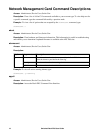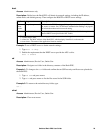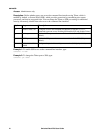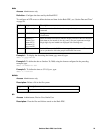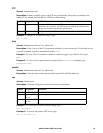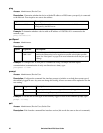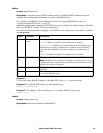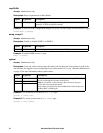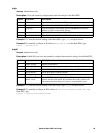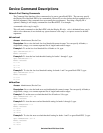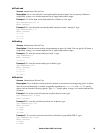
26Switched Rack PDU User Guide
radius
Access: Administrator only
Description: View the existing RADIUS settings, enable or disable RADIUS authentication, and
configure basic authentication parameters for up to two RADIUS servers.
For a summary of RADIUS server configuration and a list of supported RADIUS servers, see
“Configure the RADIUS Server” on page 79.
Additional authentication parameters for RADIUS servers are available at the Web interface of the Rack
PDU. See “RADIUS” on page 78 for more information.
For detailed information about configuring your RADIUS server, see the Security Handbook, available
at www.apc.com.
Example 1:
To view the existing RADIUS settings for the Rack PDU, type radius and press ENTER.
Example 2: To enable RADIUS and local authentication, type:
radius -a radiusLocal
Example 3: To configure a 10-second timeout for a secondary RADIUS server, type:
radius -t2 10
reboot
Access: Administrator only
Description: Restart the interface of the Rack PDU.
Option Argument Description
-a local | radiusLocal
| radius
Configure RADIUS authentication:
local—RADIUS is disabled. Local authentication is enabled.
radiusLocal—RADIUS, then Local Authentication. RADIUS and local
authentication are enabled. Authentication is requested from the RADIUS
server first. If the RADIUS server fails to respond, local authentication is
used.
radius—RADIUS is enabled. Local authentication is disabled.
-p1
-p2
<server IP> The server name or IP address of the primary or secondary RADIUS server.
Note: RADIUS servers use port 1812 by default to authenticate users. To use
a different port, add a colon followed by the new port number to the end of the
RADIUS server name or IP address.
-s1
-s2
<server secret> The shared secret between the primary or secondary RADIUS server and the
Rack PDU.
-t1
-t2
<server timeout> The time in seconds that the Rack PDU waits for a response from the primary
or secondary RADIUS server.




